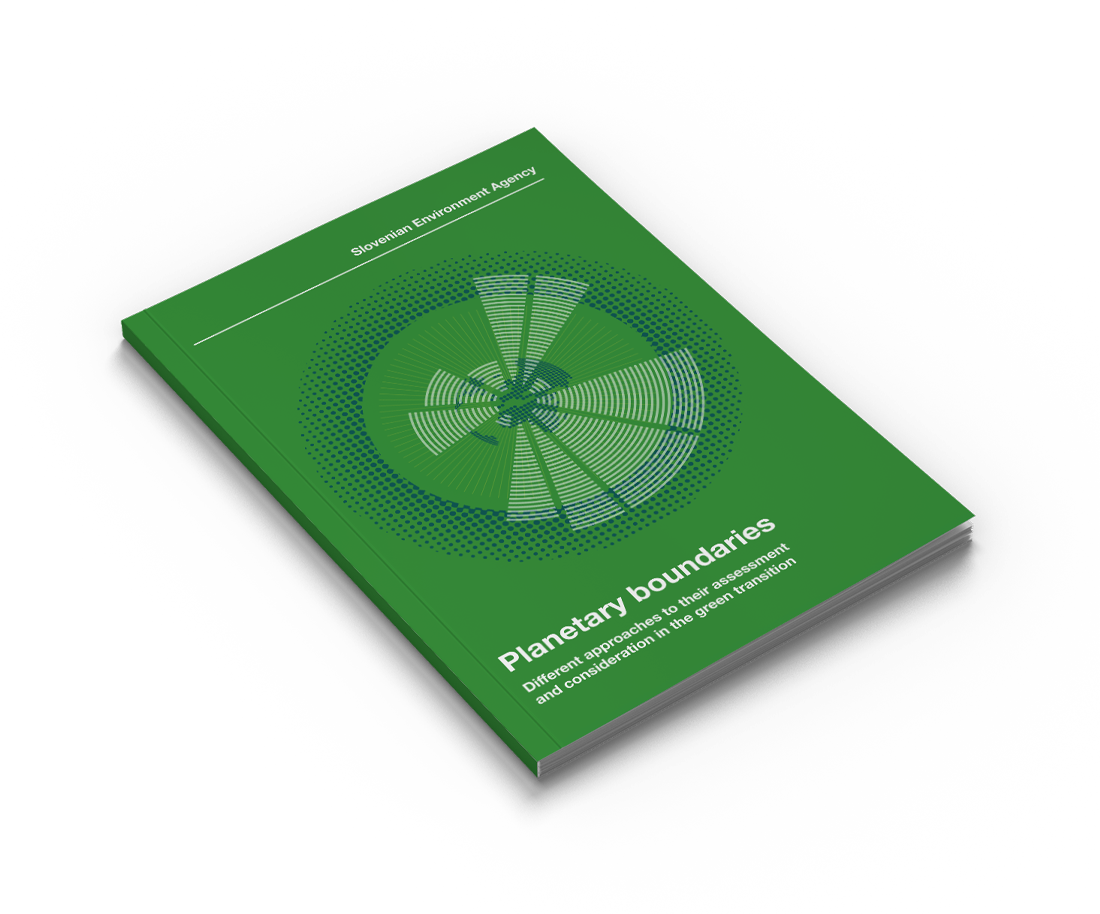Ecological footprint of Slovenia and measures for its reduction
Slovenia's Ecological Footprint, Biocapacity and Consumption
The carbon footprint is the largest component of Slovenia’s ecological footprint (50% in 2022), although it is comparable to the European and global average. Forest products are the most significant contributor to Slovenia’s ecological footprint (45% higher than the European average in 2022), while built-up and cultivated areas and fishing grounds have a much lower share.
The total ecological footprint of consumption is the sum of the footprint of production in the country with the footprint of imports into the country, minus the footprint of exports out of the country.
Ecological footprint categories - consumption and land
2. Ecological footprint of Slovenia
Grazing Land
Forest Products
Built-up Land
Cropland
Fishing Grounds
Carbon Footprint
Grazing Land
Forest Products
Built-up Land
Cropland
Fishing Grounds
Carbon Footprint
Grazing Land
Forest Products
Built-up Land
Cropland
Fishing Grounds
Grazing Land
Forest Products
Built-up Land
Cropland
Fishing Grounds
3,17 Slovenias
Every day we consume the resources provided by the Earth. This is our ecological footprint.
We must reduce our ecological footprint, for we have only one precious Earth to protect.
Ecological footprint by statistical region
Ecological footprint per capita by statistical region of Slovenia (2018)
Source: ARSO, 2023
Measures and scenarios
The latest study (2023) showed that various ambitious measures in the areas of sustainable forest management, sustainable mobility and energy efficiency can contribute to reducing Slovenia’s ecological footprint. The ecological footprint measures how much natural resources we consume, so reducing it means less pressure on the environment.
Electromobility, or the use of electric vehicles, can reduce the ecological footprint by -3.51% in the baseline scenario, but additional measures increase this reduction further to -6.14%.
The development of public passenger transport and cycling networks can already reduce the ecological footprint by -2.49% in the baseline scenario, while additional measures can reduce it by up to -5.97%.
Energy efficiency and the use of renewable energy sources in buildings reduces the ecological footprint by -4.35% in the baseline scenario, with additional measures reaching as much as -7.06%.
Together, these measures lead to a reduction of the ecological footprint of 7.08% in the baseline scenario and as much as 24.99% with additional measures.
Comparison of scenarios in five areas to reduce Slovenia's ecological footprint
Source: Slovenian Environment Agency, 2023 (preračuni Stritih d.o.o.)
The biggest challenges are in public transport and rail infrastructure in the Ljubljana region. Actions are complementary, which accelerates the achievement of the targets.
The 2023 analysis showed that additional measures in different areas could reduce Slovenia's ecological footprint by as much as 24.99%. Despite some missed opportunities and the increase in the ecological footprint over the last decade, there is still significant potential for reduction, especially through decarbonisation and technological change. Rapid reforms in the transport sector, such as expanding electromobility, improving public transport and cycling networks, and strengthening the renewable energy network and energy efficiency in buildings, are key to achieving these goals.
Planetary boundaries
The informational material includes detailed explanations of research approaches, analyses, and graphical representations.
